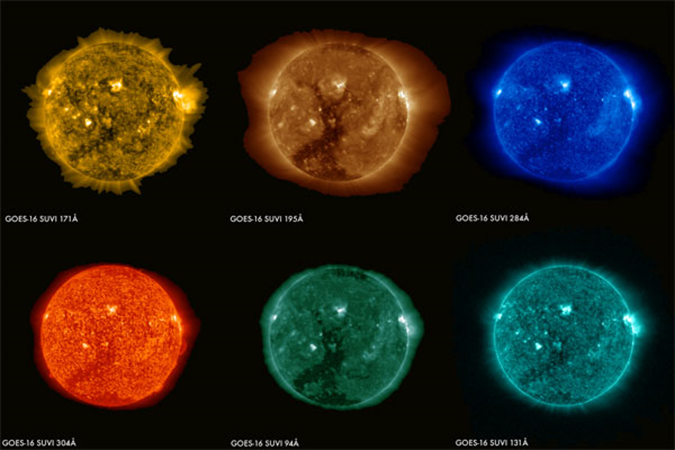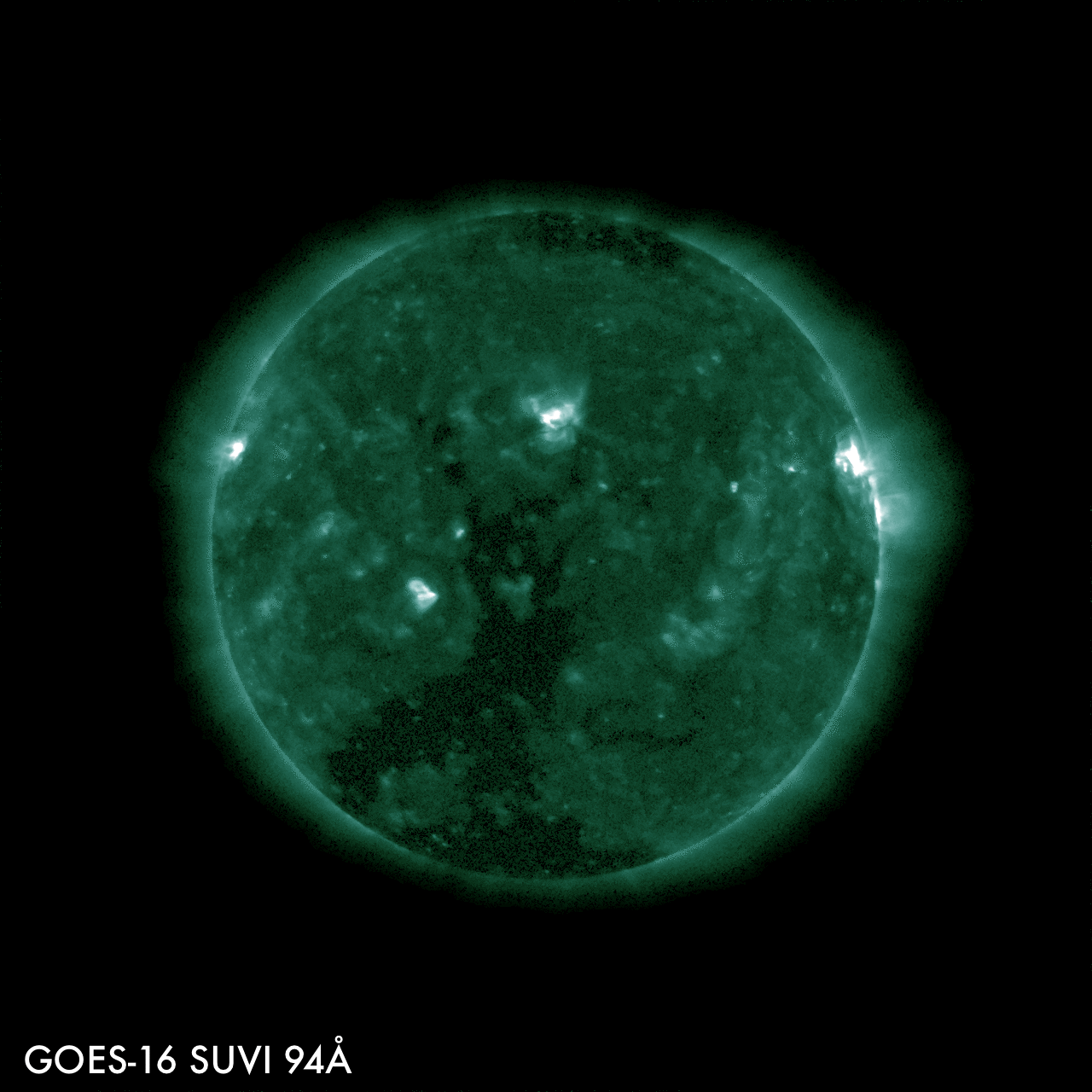There's a new entry in the space weather acronym list: SUVI. Indeed, the first images of the Solar Ultraviolet Imager onboard the GOES-16 satellite have been released and they are astonishing!

GOES-R was launched on 19 November 2016 and renamed to GOES-16 when it reached its geostationary orbit. After the necessary tests and check-outs, the release of the first magnetometer data, the first observed solar flare, and energetic particle measurements took place during the last few weeks. So, the time had come to put the cherry on the cake. Hence, on 27 February, NOAA released the first solar images obtained by SUVI. This instrument observes the Sun in 6 different wavelengths in extreme ultraviolet (EUV), providing an excellent view on everything that is going on in the solar atmosphere: quiet and active regions, coronal holes, solar flares, and the tell-tale signs of any coronal mass ejections (CMEs). All these are very important to the space weather community.

SUVI made its first images on 29 January, when an extension of a southern polar coronal hole was marking the solar corona. It can be seen in some SUVI passbands as a darkish extension upward the solar disk. One month later, this coronal hole has rotated back on the solar disk and may influence the earth environment again. Note that all these data and imagery are still preliminary and non-operational, as GOES-16 continues its on-orbit testing.
More info on GOES-16 and its space weather instruments can be found at the dedicated NASA and NOAA websites. More info on the SUVI instrument is at the GOES-16 website.
Congrats to the GOES-16 and the instruments teams!





